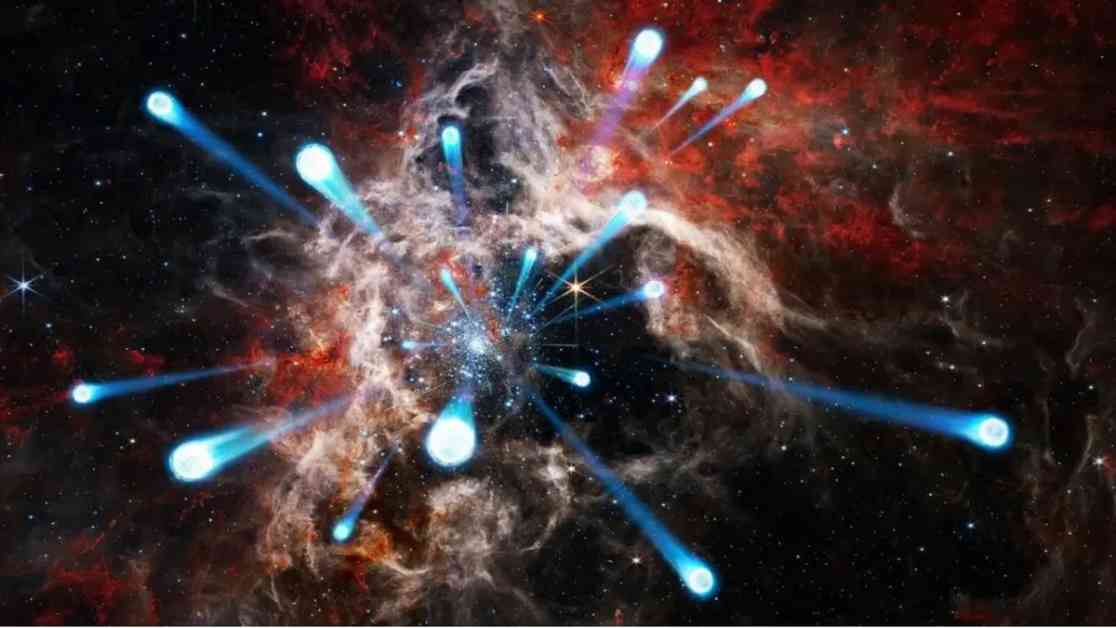A team of astronomers using Europe’s Gaia space telescope has made a groundbreaking discovery in the Large Magellanic Cloud (LMC), a satellite galaxy of the Milky Way. They have found 55 runaway stars being ejected at high speeds from a young star cluster called R136, located about 158,000 light-years away. These stars are racing away from their home cluster at speeds exceeding 62,000 mph, which is incredibly fast compared to the speed of sound on Earth.
The star cluster R136 is home to some of the largest stars ever observed by astronomers, with some stars having up to 300 times the mass of our sun. The runaway stars were ejected in two separate bursts over the past two million years, with some of them likely to end their lives in supernova explosions, leaving behind black holes or neutron stars.
This discovery was led by a team of astronomers from the University of Amsterdam, who used Gaia to monitor the positions of billions of stars with high precision. The findings have increased the number of known runaway stars by a factor of 10, shedding light on the processes that lead to stars being exiled from their birth clusters.
The researchers were surprised to find evidence of two major escape events in R136, with the second event occurring just 200,000 years ago. They believe that interactions with another nearby cluster may have caused the second burst of runaway stars, potentially leading to a future merger between the two clusters.
Massive stars like those in R136 burn through their nuclear fuel rapidly, leading to short lifespans compared to stars like our sun. These massive stars play a crucial role in the structure and evolution of galaxies, influencing the re-ionization of the early universe through their intense ultraviolet emissions.
The team’s research not only provides valuable insights into the dynamics of star clusters but also demonstrates the capabilities of the Gaia space telescope in studying distant objects like the LMC. By studying events like the ejection of runaway stars, astronomers can gain a better understanding of the processes that shape galaxies and the universe as a whole.
The findings of this research were published in the journal Nature, highlighting the importance of studying runaway stars and their impact on cosmic evolution. This discovery opens up new avenues for further research into the role of massive stars in shaping the universe and the galaxies within it.










